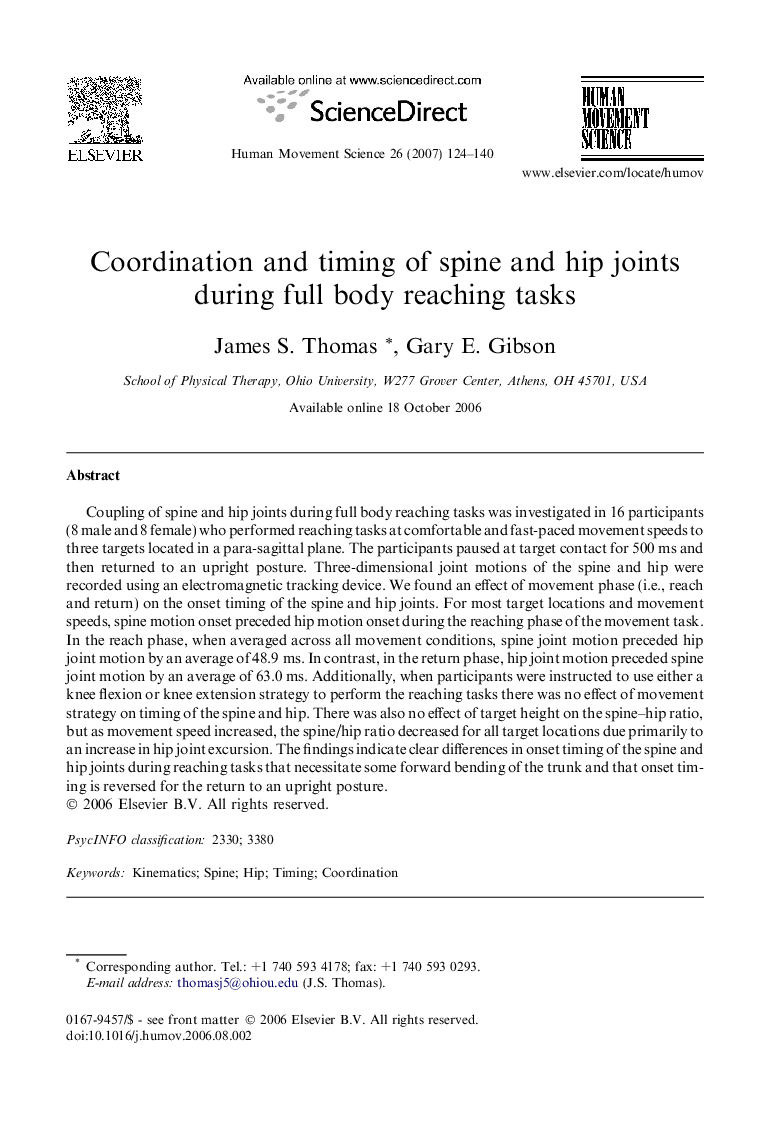| Article ID | Journal | Published Year | Pages | File Type |
|---|---|---|---|---|
| 928870 | Human Movement Science | 2007 | 17 Pages |
Coupling of spine and hip joints during full body reaching tasks was investigated in 16 participants (8 male and 8 female) who performed reaching tasks at comfortable and fast-paced movement speeds to three targets located in a para-sagittal plane. The participants paused at target contact for 500 ms and then returned to an upright posture. Three-dimensional joint motions of the spine and hip were recorded using an electromagnetic tracking device. We found an effect of movement phase (i.e., reach and return) on the onset timing of the spine and hip joints. For most target locations and movement speeds, spine motion onset preceded hip motion onset during the reaching phase of the movement task. In the reach phase, when averaged across all movement conditions, spine joint motion preceded hip joint motion by an average of 48.9 ms. In contrast, in the return phase, hip joint motion preceded spine joint motion by an average of 63.0 ms. Additionally, when participants were instructed to use either a knee flexion or knee extension strategy to perform the reaching tasks there was no effect of movement strategy on timing of the spine and hip. There was also no effect of target height on the spine–hip ratio, but as movement speed increased, the spine/hip ratio decreased for all target locations due primarily to an increase in hip joint excursion. The findings indicate clear differences in onset timing of the spine and hip joints during reaching tasks that necessitate some forward bending of the trunk and that onset timing is reversed for the return to an upright posture.
